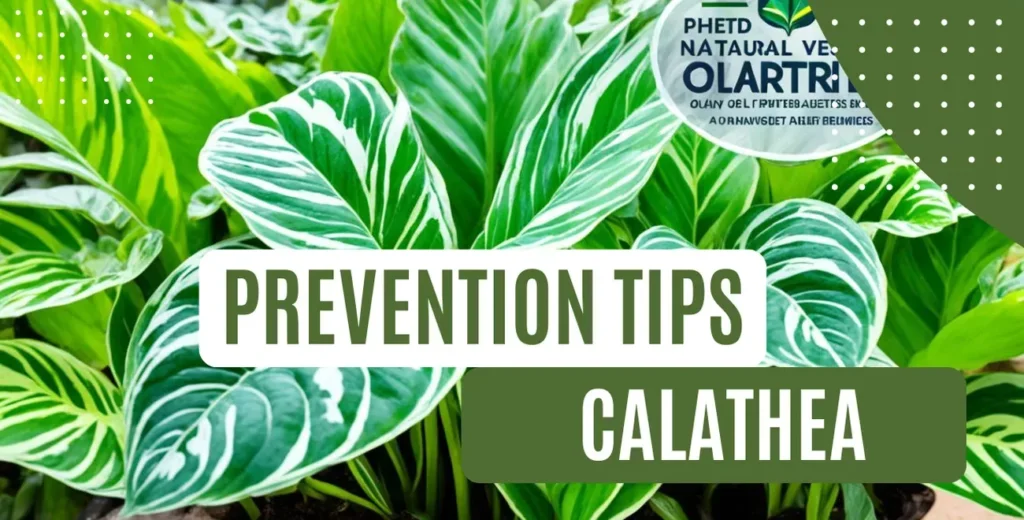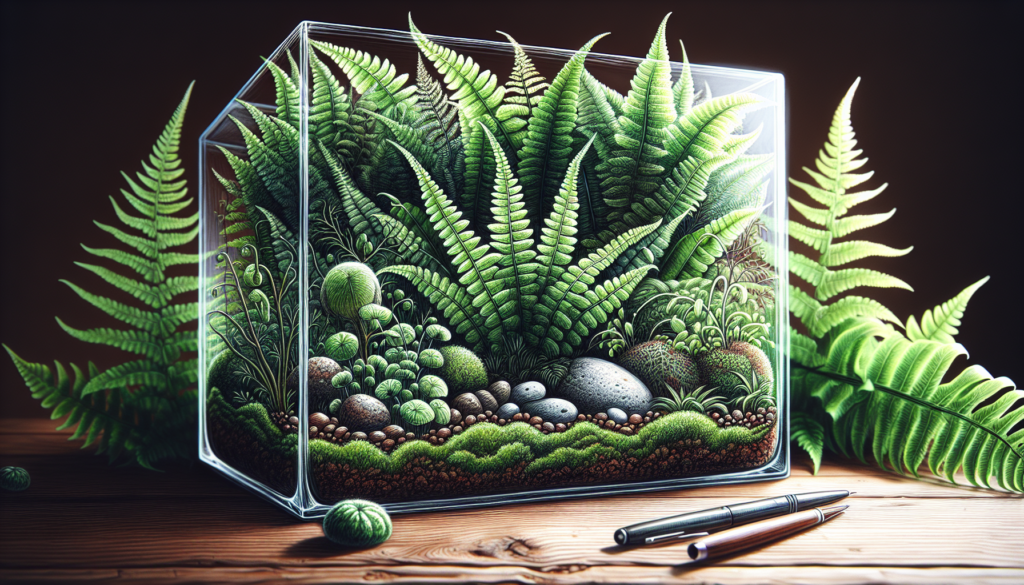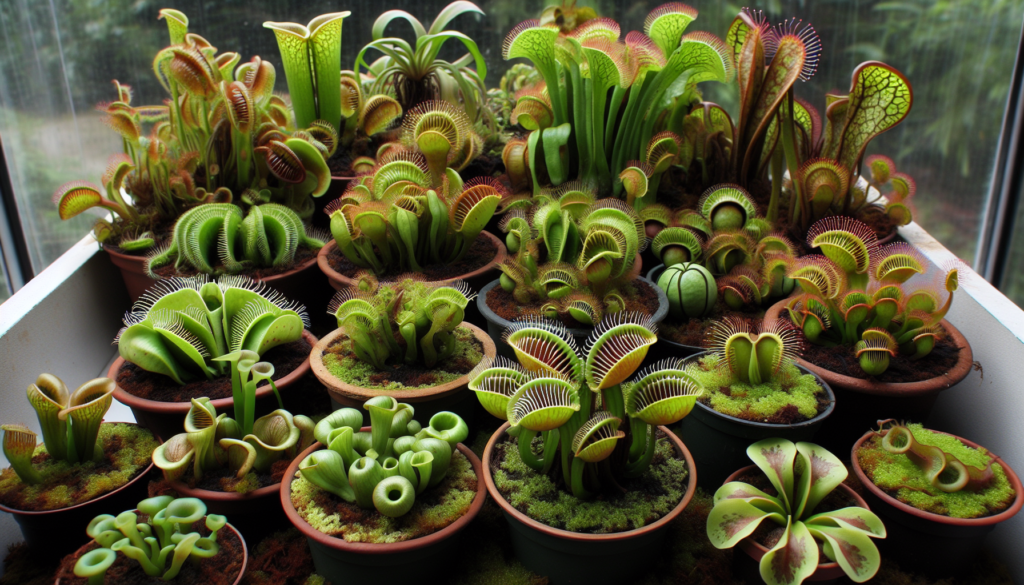To prevent pests and diseases in Calathea, maintain proper watering, humidity, and air circulation, and inspect regularly for early detection and treatment of issues.
To keep your Calathea healthy and vibrant, understanding and preventing pests like aphids, spider mites, and mealybugs, along with diseases such as leaf spot, root rot, and powdery mildew, is crucial.
Implementing regular inspections, maintaining cleanliness, ensuring proper watering, airflow, and humidity levels, and embracing organic remedies over harmful chemicals can significantly safeguard your Calathea.
Adopting a thorough care routine covering watering, fertilizing, and suitable lighting, alongside troubleshooting common issues like yellowing or wilting leaves, prepares you to address challenges effectively and possibly consult experts for persistent problems, ensuring your plant thrives in your indoor garden.
Understanding Calathea Pests
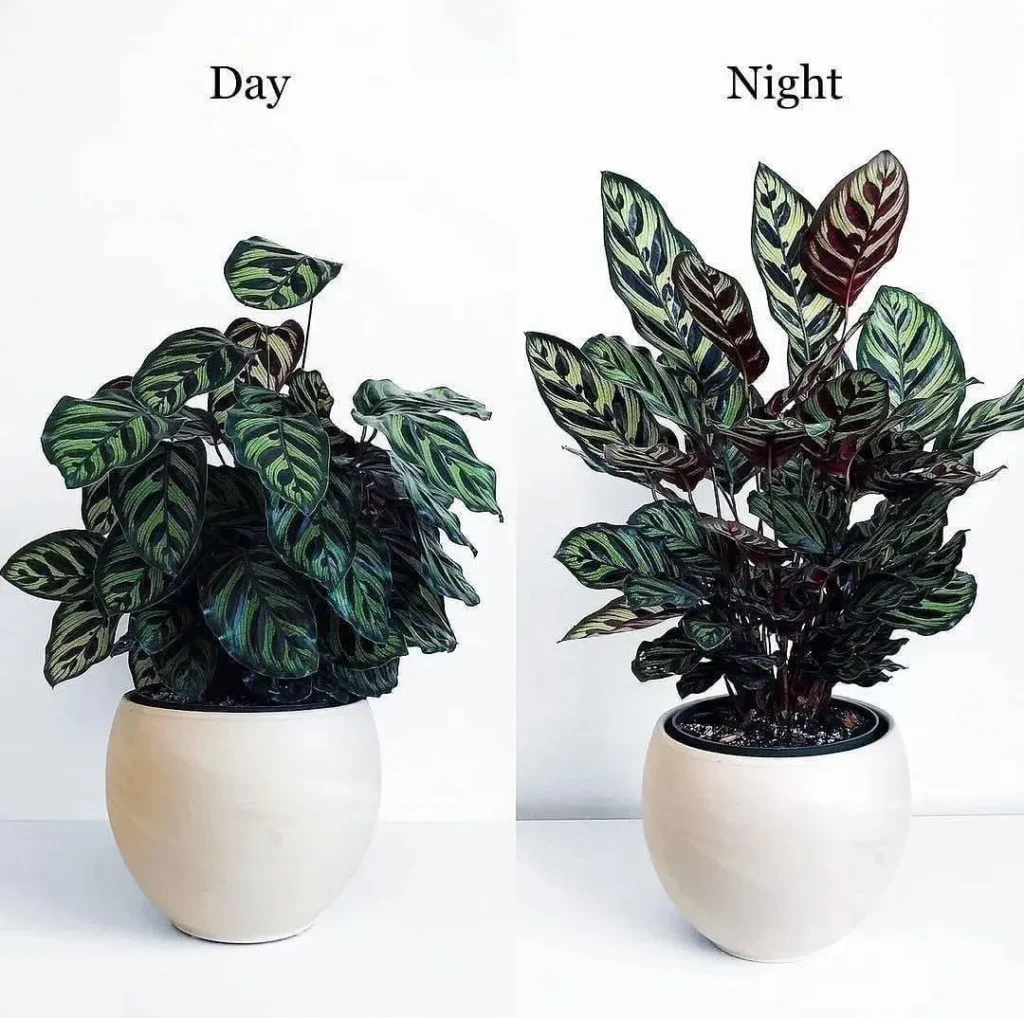
In this section, I will delve into the world of common pests that can invade your beloved Calathea plant. By understanding these pesky intruders, you can take the necessary measures to protect your plant and maintain its health and beauty.
When it comes to Calathea pests, aphids are among the most common culprits. These tiny insects can wreak havoc on your plant by sucking out sap from the leaves, causing them to curl and distort.
Another troublemaker you might encounter is the spider mite. These minuscule pests can quickly multiply and create a fine webbing on your plant’s foliage. They feed on the sap, leading to yellowing leaves and stunted growth.
Mealybugs are yet another nuisance that can infest your Calathea. These cottony-looking critters love to hide in the leaf axils and crevices, making them difficult to spot. They suck sap from the plant, causing leaves to turn yellow and wilt.
Preventive Measures Against Calathea Pests
To keep these pests at bay, it’s essential to regularly inspect your Calathea for signs of infestation. Look out for sticky residue, distorted leaves, or tiny webs. If you spot any, act promptly to prevent further damage.
One effective preventive measure is to isolate any newly acquired plants for about a month. This quarantine period helps ensure that no pests hitch a ride into your existing plant collection.
Additionally, maintaining a clean and healthy environment is crucial. Regularly dust and wipe the leaves to remove any debris or eggs. Avoid overwatering, as it creates a favorable environment for pests to thrive.
When it comes to treating these pests, organic solutions can be effective. Gentle insecticidal soaps or neem oil sprays can help eradicate them without harming your plant or the environment.
Identifying Calathea Diseases

In order to protect your Calathea plant and promote its overall health, it is essential to be able to identify common diseases that can affect it. By recognizing the early symptoms, you can take prompt action and prevent further damage to your precious plant.
One of the most common diseases that can impact your Calathea is leaf spot. This fungal infection often manifests as small, dark spots on the leaves. These spots may have a brown or black center with a yellow halo around them.
Leaf spot can spread quickly, causing the affected leaves to wither and die if left untreated.
Another disease that Calathea plants are susceptible to is root rot. This condition occurs when the roots become infected by fungi or bacteria, usually due to overwatering or poorly-draining soil.
Symptoms of root rot include yellowing and wilting leaves, as well as a foul smell emanating from the soil.
Powdery mildew is yet another disease that can affect your Calathea. This fungal infection typically appears as a white or gray powdery coating on the leaves.
Infected leaves may also become distorted or stunted in growth. Powdery mildew thrives in high humidity and can spread rapidly, so immediate action is necessary.
By being vigilant and regularly inspecting your Calathea plant for these and other diseases, you can catch them early and prevent them from spreading. It’s important to remember that early intervention is key to successfully treating and managing these diseases.
- Leaf spot: Small, dark spots on leaves with a brown or black center and a yellow halo.
- Root rot: Yellowing and wilting leaves, accompanied by a foul smell from the soil.
- Powdery mildew: White or gray powdery coating on the leaves, with distorted or stunted growth.
Prevention Techniques for Calathea Pests
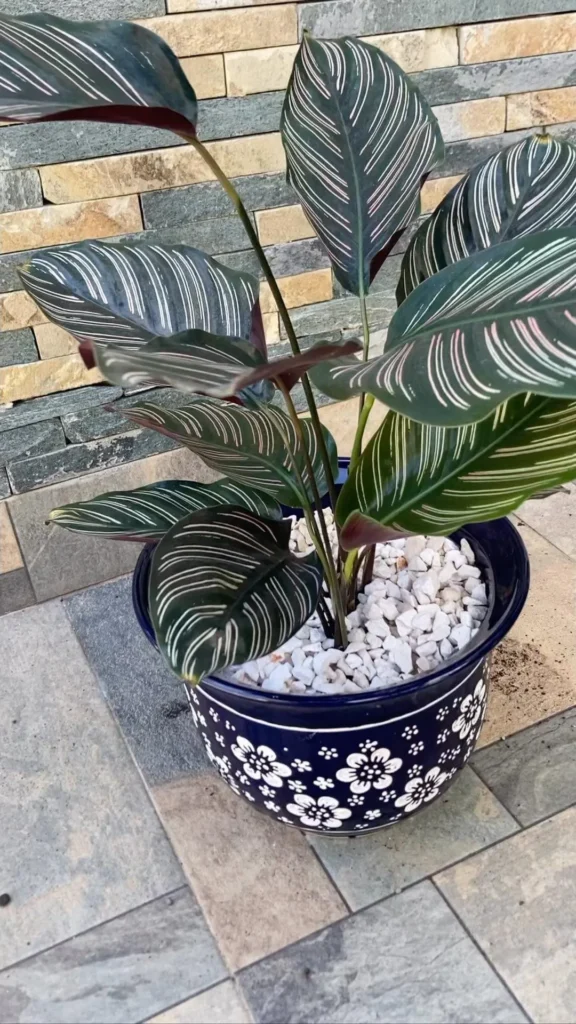
1. Regular Inspection: Regularly inspect your Calathea plant for any signs of pest infestations. Look out for pests like aphids, spider mites, and mealybugs, which are common culprits for causing damage to Calathea. Early detection can prevent further spread and damage to your plant.
2. Clean Environment: Keep your indoor space clean and tidy. Cluttered areas can provide hiding spots for pests, making it easier for them to take control of your plant. Regularly clean the leaves, remove fallen debris, and keep the surrounding area free from dust and dirt.
3. Proper Watering: Overwatering can create a favorable environment for pests. Ensure that you water your Calathea adequately, allowing the soil to dry slightly between watering sessions. Avoid waterlogging and consider using a well-draining soil mix to prevent root rot and discourage pests.
4. Natural Pest Deterrents: Embrace natural pest deterrents to keep unwanted visitors at bay. Some effective options include neem oil, insecticidal soaps, and homemade remedies like garlic spray or peppermint oil. These natural solutions are safer for both your Calathea and the environment.
5. Maintain Proper Airflow: Good airflow helps keep pests away and prevents the development of humid conditions that can attract them. Place your Calathea in a well-ventilated area, away from drafts, and consider using a fan to improve air circulation if necessary.
6. Quarantine New Plants: Before introducing a new plant to your Calathea collection, quarantine it for a few weeks. This allows you to monitor the plant for any signs of pests or diseases. If you find any issues, treat the plant accordingly to prevent the spread of pests to your existing collection.
7. Biological Control: Consider introducing beneficial insects like ladybugs or predatory mites to control pest populations naturally. These insects feed on pests, effectively reducing their numbers without the need for harmful chemicals.
8. Maintain Indoor Humidity: Some pests thrive in dry conditions, while others prefer high humidity. Find the ideal balance for your Calathea by maintaining a moderate humidity level. Avoid over-misting your plant, as excess moisture can lead to fungal diseases.
Prevention Strategies for Calathea Diseases
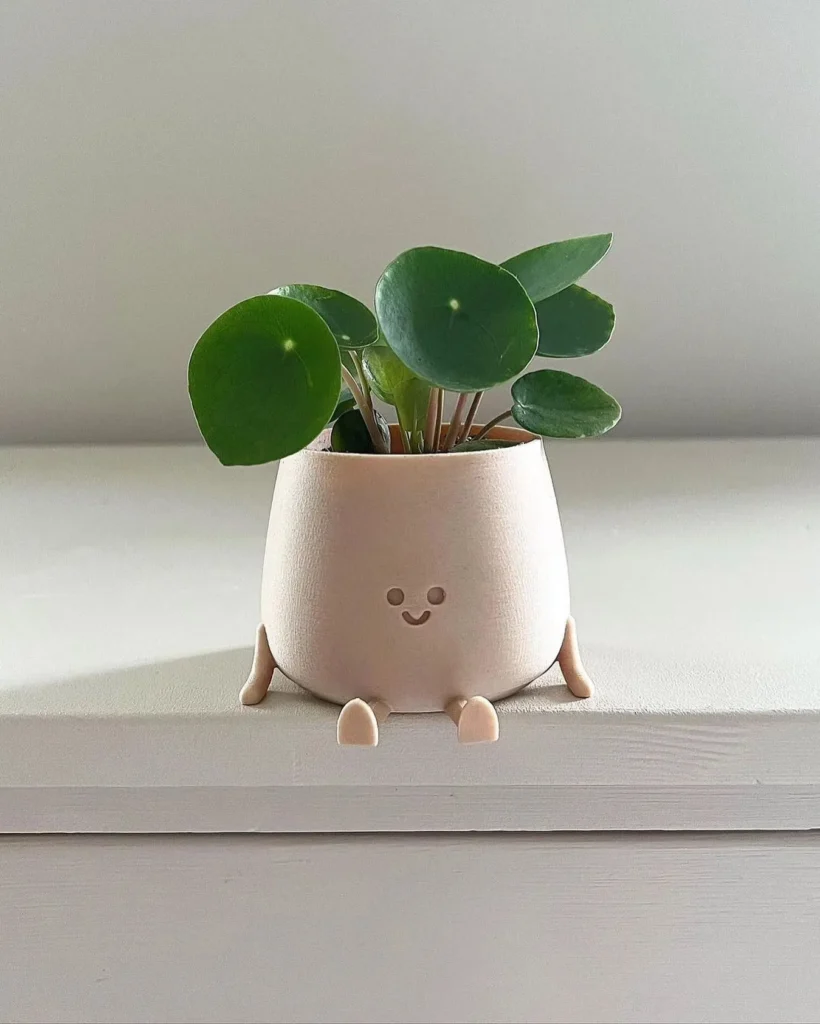
When it comes to keeping your Calathea plant healthy, prevention is key. By implementing the right strategies, you can significantly reduce the risk of diseases that can impact your plant’s growth and vitality.
Proper Watering Techniques: Calatheas are sensitive to both underwatering and overwatering. To prevent diseases caused by improper watering, such as root rot, it’s crucial to find the right balance.
Always water your Calathea when the top inch of soil feels slightly dry. Ensure good drainage to avoid waterlogging.
Adequate Airflow: Proper airflow is essential to prevent the buildup of moisture, which can lead to fungal diseases like powdery mildew. Ensure that your Calathea is not placed in a stagnant or enclosed area. Position it in a well-ventilated spot where air can circulate freely.
Maintaining Appropriate Humidity Levels: Calatheas thrive in humid conditions, but excessively high humidity can create a breeding ground for diseases. Aim for a humidity level between 50% and 60% to strike the right balance.
You can increase humidity by placing a tray of water near the plant or using a room humidifier.
Natural Remedies for Calathea Pests and Diseases

In this section, I will share natural remedies that can help you combat pests and diseases in your Calathea plant. These remedies provide a safer alternative to chemical treatments, ensuring the health and well-being of your beloved plant. If you’re facing pest infestations, one effective natural remedy is homemade insecticidal soap. To make your own, mix two teaspoons of mild liquid soap, such as Castile soap, with one quart of water.
Spray this solution onto the affected leaves, making sure to cover both the upper and lower surfaces. Repeat this process every few days until the pests are eliminated.
Another natural remedy for pests is neem oil. Neem oil is derived from the neem tree and has insecticidal properties. Dilute one tablespoon of neem oil in one quart of water and spray it on the affected areas. Be sure to follow the instructions on the product label for proper usage.
For fungal diseases like powdery mildew, you can use a mixture of baking soda and water. Combine one tablespoon of baking soda with one gallon of water and spray this solution onto the affected leaves.
Repeat the treatment every week until the powdery mildew is under control.
Additionally, you can use organic fungicides, such as copper-based solutions, to combat fungal diseases. These products are less harmful to the environment and provide an effective defense against diseases like leaf spot and root rot.
- Homemade insecticidal soap: Mix two teaspoons of mild liquid soap with one quart of water. Spray on affected leaves.
- Neem oil: Dilute one tablespoon of neem oil in one quart of water. Spray on affected areas.
- Baking soda spray: Combine one tablespoon of baking soda with one gallon of water. Spray on affected leaves.
- Organic fungicides: Use copper-based solutions to combat fungal diseases like leaf spot and root rot.
Proper Calathea Care Routine
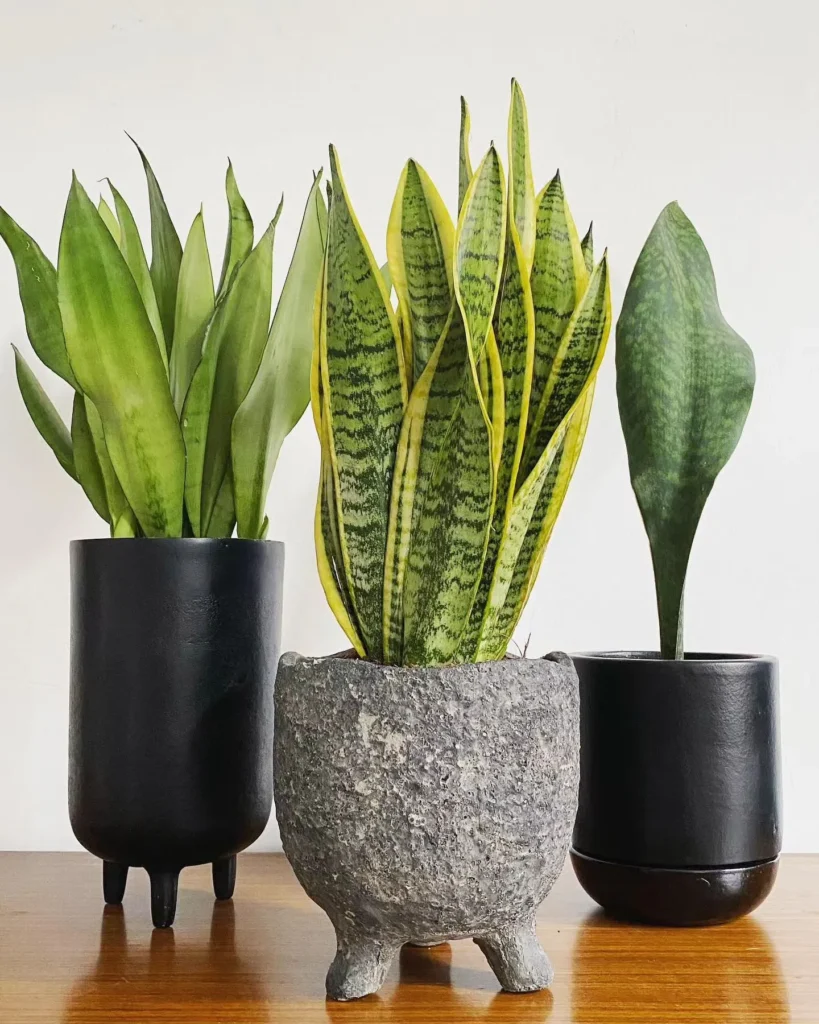
A healthy care routine is essential for maintaining the vitality of your Calathea plant and ensuring its resistance to pests and diseases. By following these essential care practices, you can create an optimal environment for your plant to thrive.
1. Watering
Proper watering is crucial for your Calathea’s well-being. Keep the soil consistently moist but not soggy. Avoid overwatering, as it can lead to root rot.
Check the moisture level of the soil regularly and adjust the watering frequency accordingly.
2. Fertilizing
Feed your Calathea plant with a balanced liquid fertilizer during the growing season, typically from spring to early fall. Dilute the fertilizer according to the instructions on the label and apply it every two to four weeks.
This will provide the necessary nutrients for healthy growth.
3. Lighting
Calatheas thrive in bright, indirect light. Place your plant near a window with filtered sunlight, away from direct exposure. Avoid placing them in dark corners or areas with intense, direct sunlight, as it can damage the leaves.
4. Humidity
Calatheas require high humidity levels to thrive. Increase humidity by placing a tray of water near the plant or using a humidifier. Misting the leaves with water occasionally can also help maintain the required moisture levels.
5. Temperature
Calatheas require high humidity levels to thrive. Increase humidity by placing a tray of water near the plant or using a humidifier. Misting the leaves with water occasionally can also help maintain the required moisture levels.
Troubleshooting Common Problems
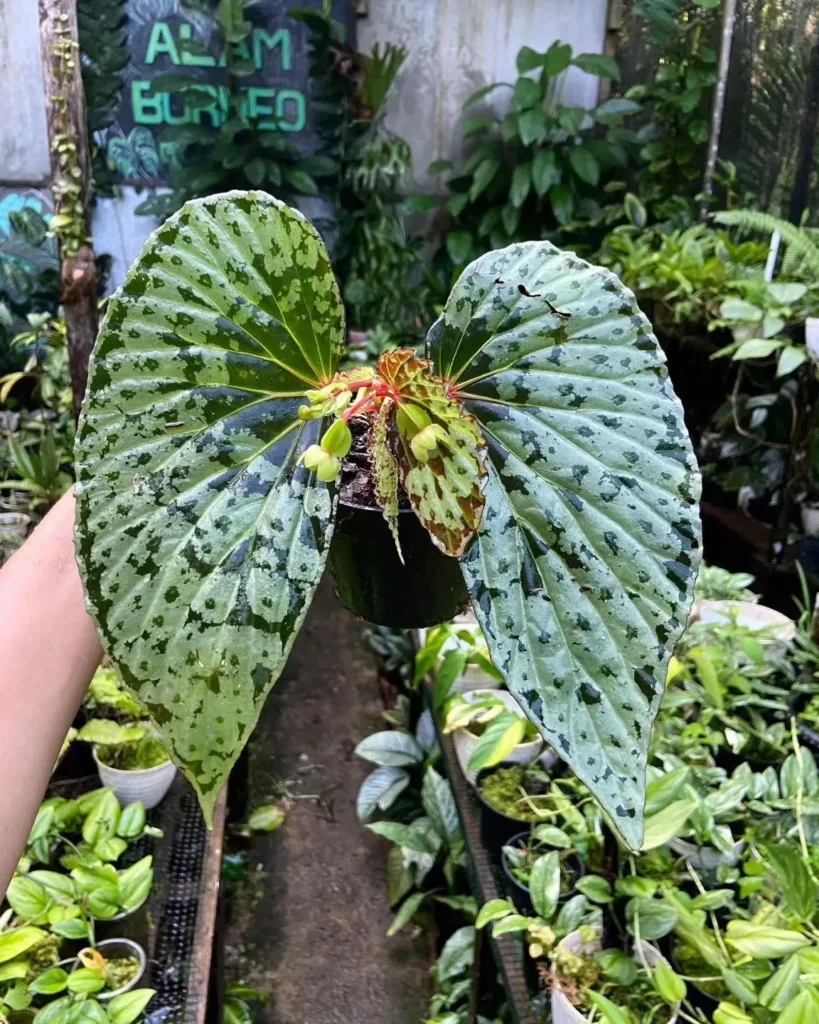
Despite our best efforts, common problems can occasionally plague Calathea plants, leading to concerns about their health and appearance. By troubleshooting these issues early on, you can prevent them from escalating and help your Calathea thrive.
Yellowing Leaves
Yellowing leaves are a common problem that many Calathea owners face. This issue is often caused by overwatering or underwatering the plant. To troubleshoot yellowing leaves:
- Check the soil moisture: If the soil feels excessively wet, allow it to dry out before watering again. If the soil feels dry to the touch, give the plant a thorough watering, ensuring that water drains out from the bottom.
- Review your watering schedule: Adjust your watering frequency based on the specific needs of your Calathea and the environmental conditions.
- Check for proper drainage: Ensure that your Calathea’s pot has drainage holes to prevent water from stagnating around the roots.
- Consider environmental factors: Calathea plants thrive in humid environments. If the air is too dry, use a humidifier or try placing a tray of water near the plant to increase humidity levels.
Wilting
Wilting is often an indication that your Calathea is not receiving enough water or is exposed to unfavorable conditions. To troubleshoot wilting:
- Check the soil moisture: If the soil feels dry, give the plant a thorough watering. Ensure that water reaches the root zone.
- Inspect the roots: If your Calathea is potted, gently remove it from the container and check the roots for signs of root rot. Trim off any rotten or mushy roots and repot the plant in fresh, well-draining soil.
- Assess the lighting conditions: Calathea plants prefer bright, indirect light. If your plant is exposed to direct sunlight or insufficient light, relocate it to a more suitable spot.
- Consider temperature and humidity: Calathea plants thrive in temperatures between 65-80°F (18-27°C) with high humidity levels. Ensure your plant is not exposed to extreme temperature fluctuations or low humidity.
Curling
Curling leaves in a Calathea can be caused by various factors, including improper watering, temperature extremes, and low humidity. To troubleshoot curling:
- Review your watering practices: Ensure you are providing consistent water to your Calathea, neither overwatering nor allowing the soil to become bone dry.
- Check the humidity levels: Increase humidity by misting the leaves, placing the plant near a humidity tray, or using a room humidifier.
- Assess temperature and air circulation: Keep your Calathea away from drafts, vents, and locations with extreme temperature fluctuations.
- Inspect for pests: Spider mites, mealybugs, and other pests can cause leaf curling. Check the plant for signs of infestation and take appropriate measures if necessary.
Professional Help for Calathea Pests and Diseases

If you have been struggling with persistent issues related to pests or diseases in your beloved Calathea plant, seeking professional help can provide the necessary expertise and guidance to address these challenges effectively.
When dealing with complex problems that require specialized knowledge, consulting a plant expert or professional can significantly increase your chances of saving and rejuvenating your Calathea.
These professionals have in-depth knowledge in plant health, pest management, and disease control, allowing them to accurately diagnose and recommend appropriate treatments.
There are several situations where it is advisable to consider professional help:
- If your Calathea plant is severely infested with pests such as aphids, spider mites, or mealybugs, and home remedies have failed to eliminate the infestation.
- If your Calathea is showing signs of diseases like leaf spot, root rot, or powdery mildew, and the symptoms are worsening despite your best efforts.
- If you are unsure about the cause of the problem or need expert advice on prevention strategies to protect your Calathea from future infestations or diseases.
Conclusion
Throughout this article, we have explored essential tips and techniques to protect your Calathea plant from pests and diseases. By implementing these prevention strategies and following a proper care routine, you can ensure the health and vitality of your Calathea.
We began by understanding common pests that can affect your Calathea, such as aphids, spider mites, and mealybugs. We then delved into various diseases, including leaf spot, root rot, and powdery mildew, and how to identify their symptoms.
In order to prevent pests, regular inspection and maintaining a clean environment are crucial.
Additionally, proper watering techniques, adequate airflow, and suitable humidity levels help in keeping diseases at bay. When necessary, natural remedies can be used as safer alternatives to chemical treatments.
By establishing a care routine that includes watering, fertilizing, and providing suitable lighting conditions, you can strengthen your Calathea’s resistance to problems. In case common issues like yellowing leaves or wilting arise, troubleshooting them promptly can prevent further damage.
If persistent problems persist, seeking professional help from plant experts is advisable. Their guidance and treatment can aid in resolving issues and ensuring the overall well-being of your Calathea plant.

